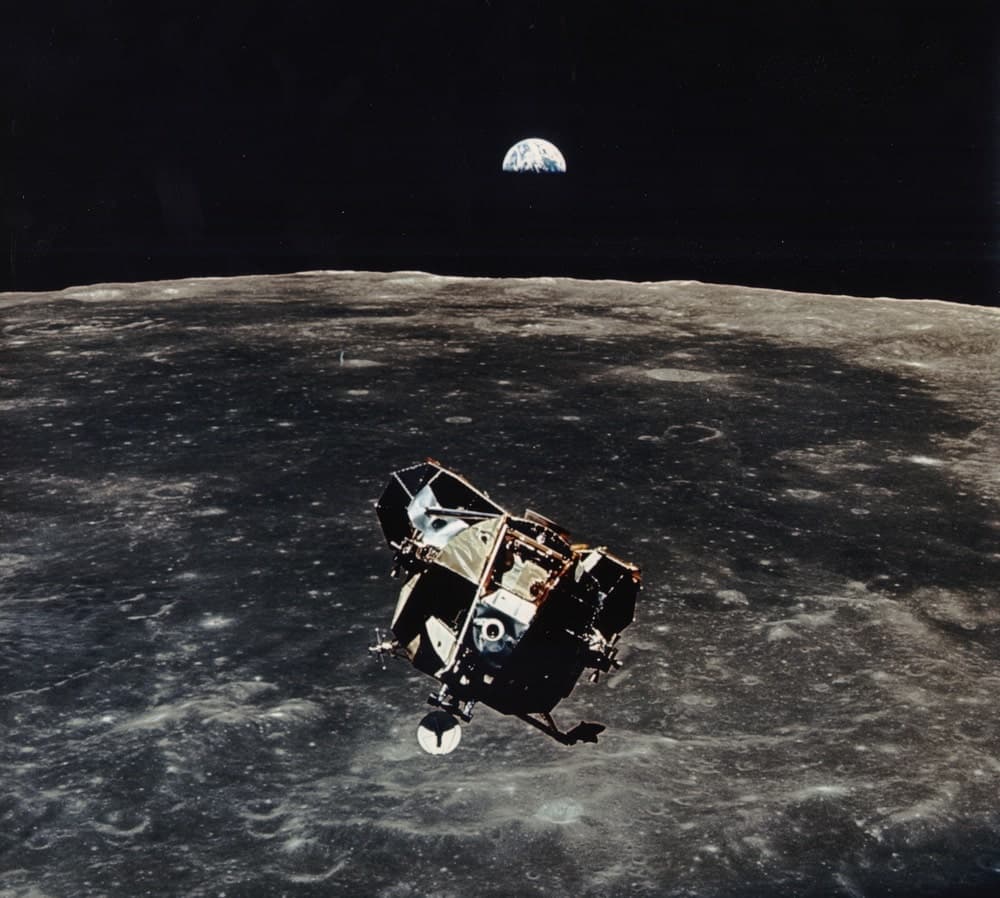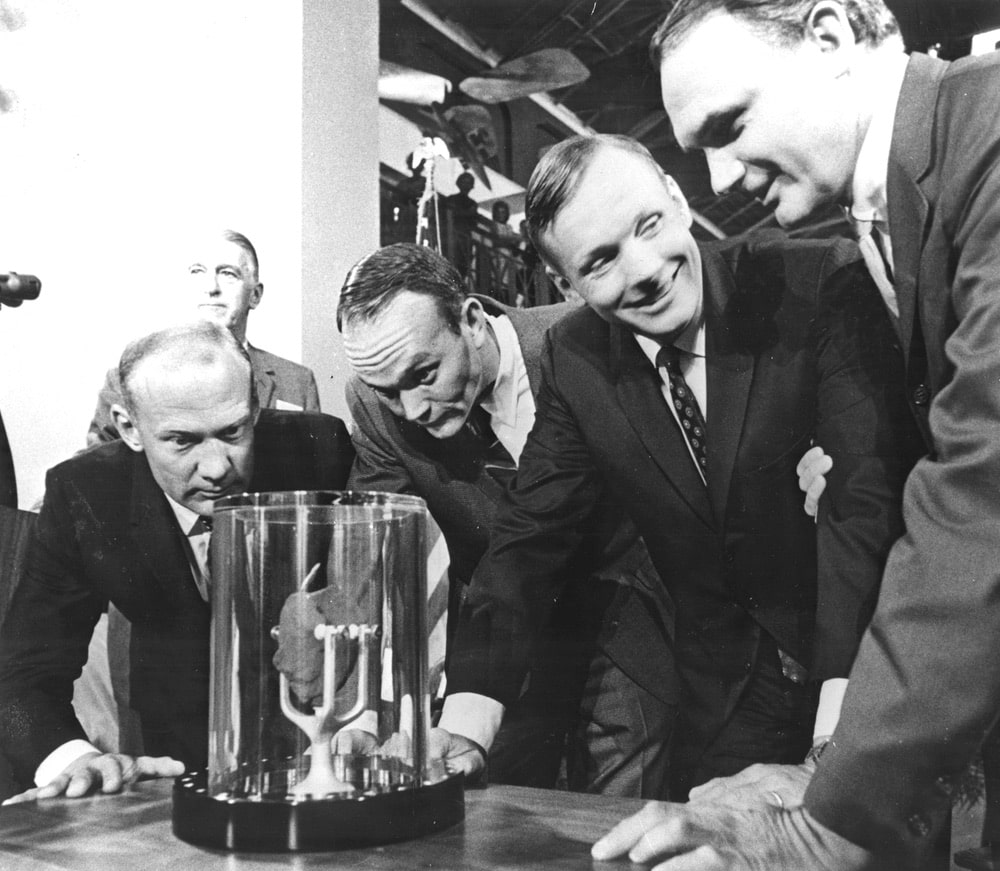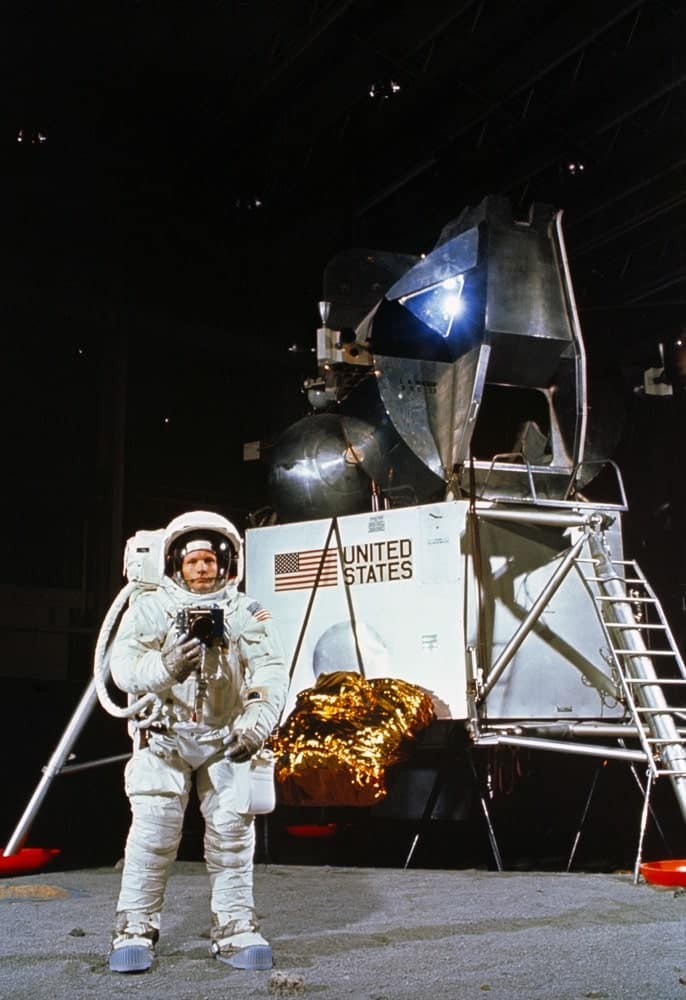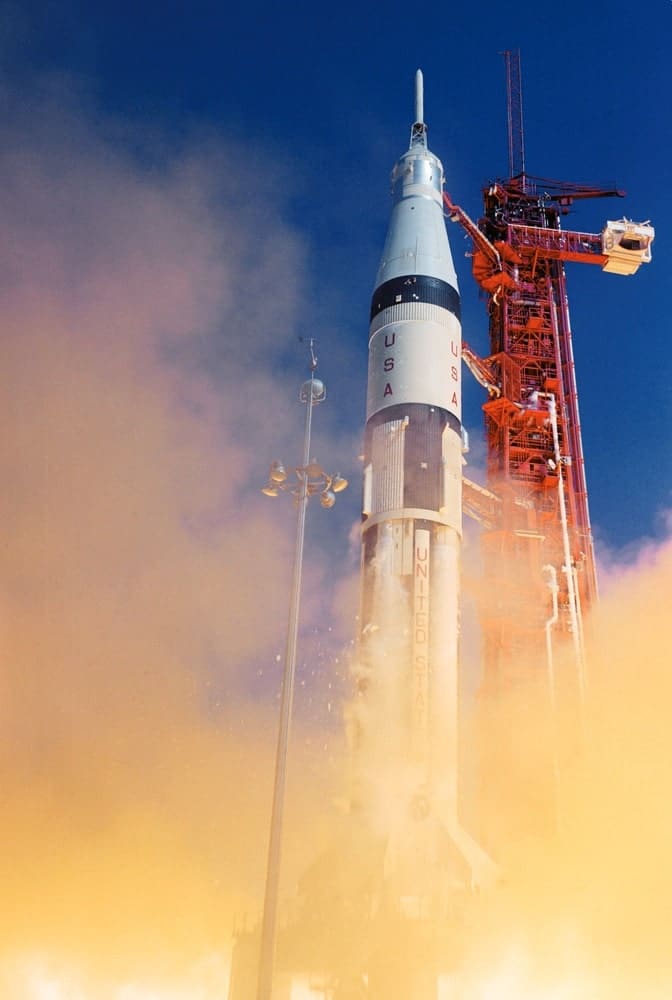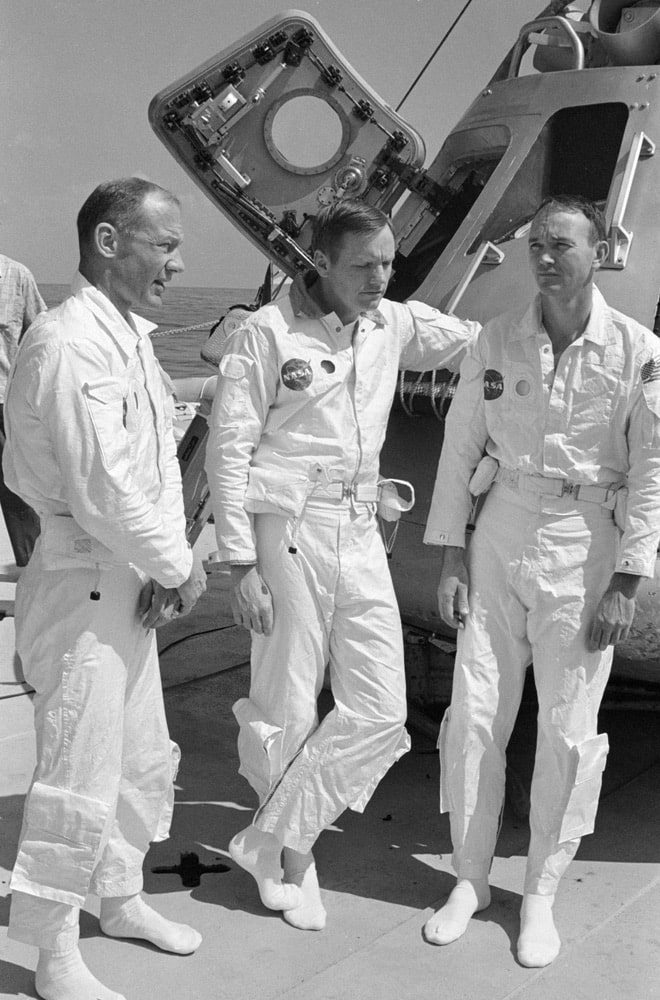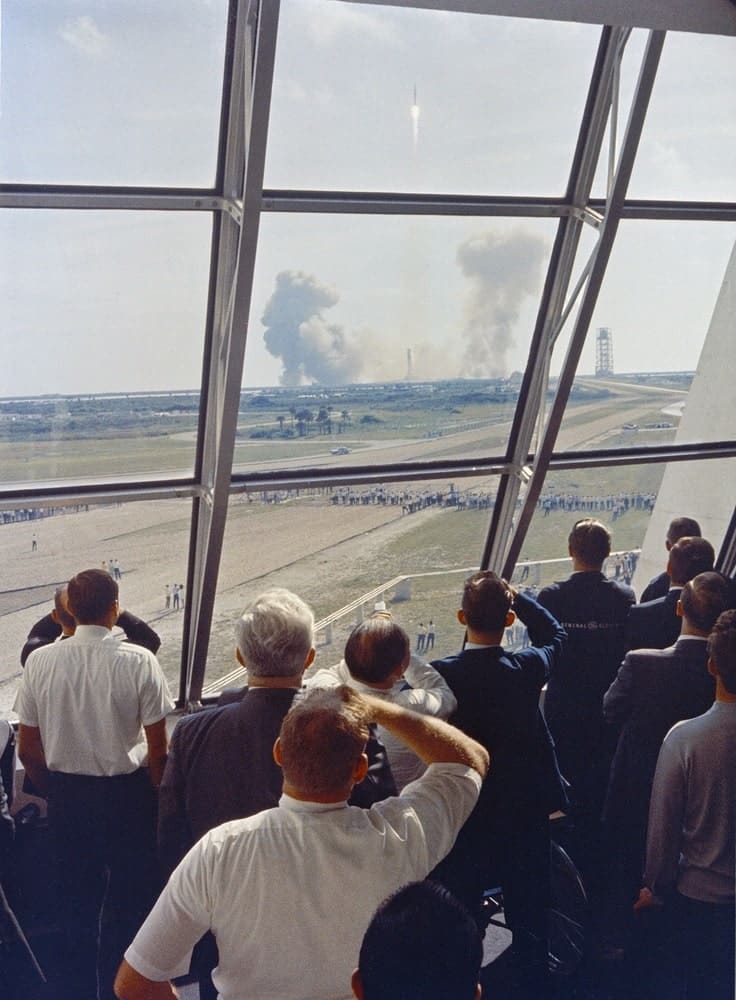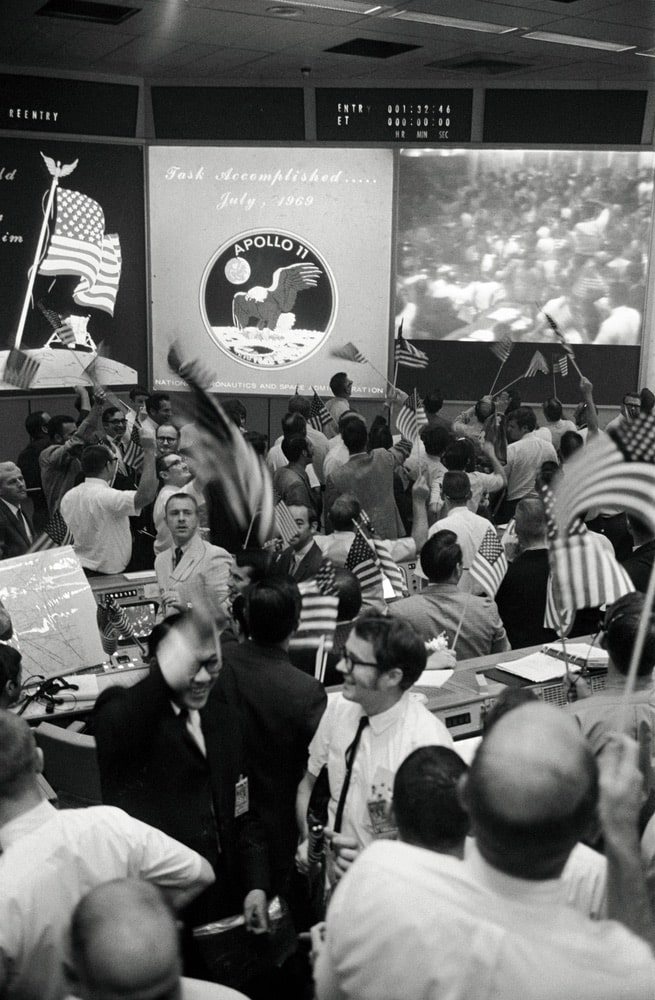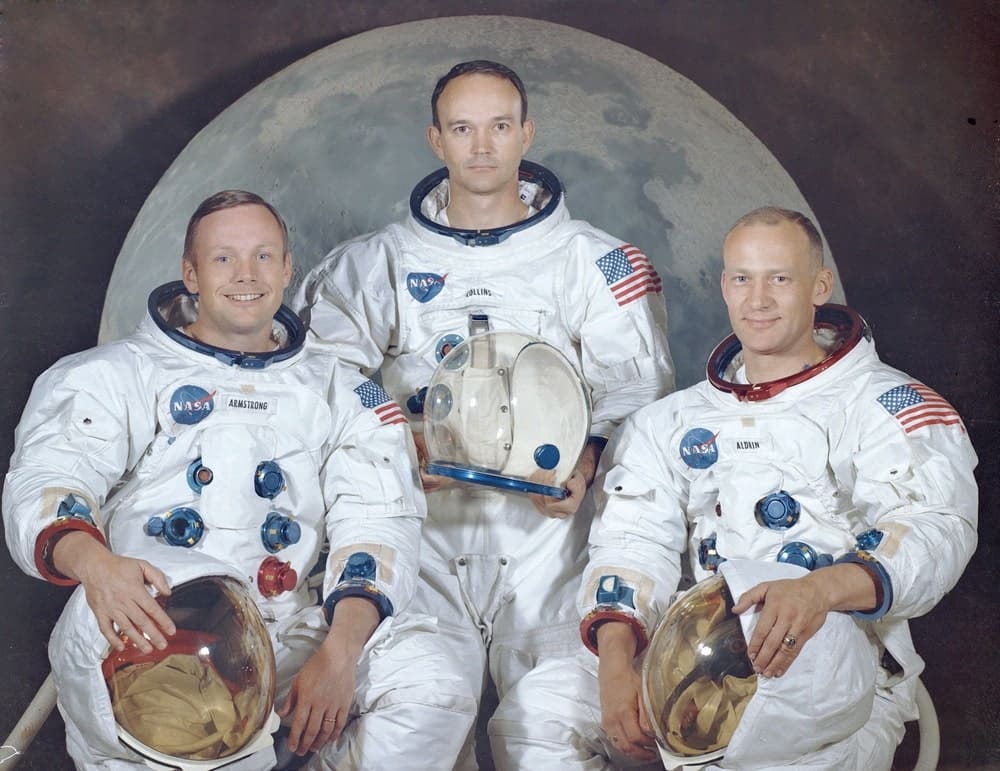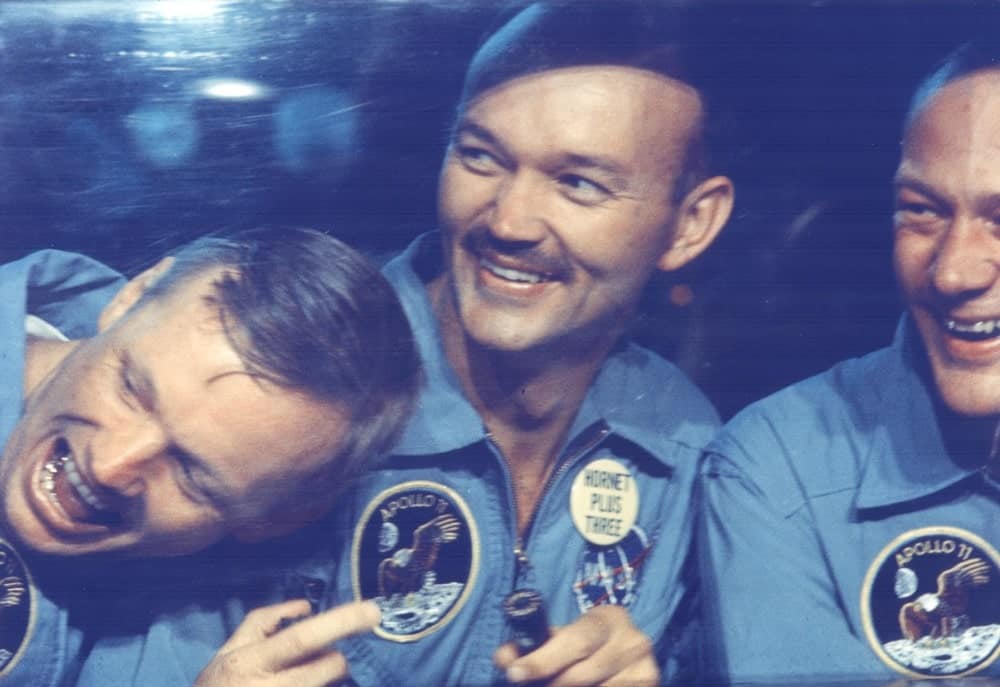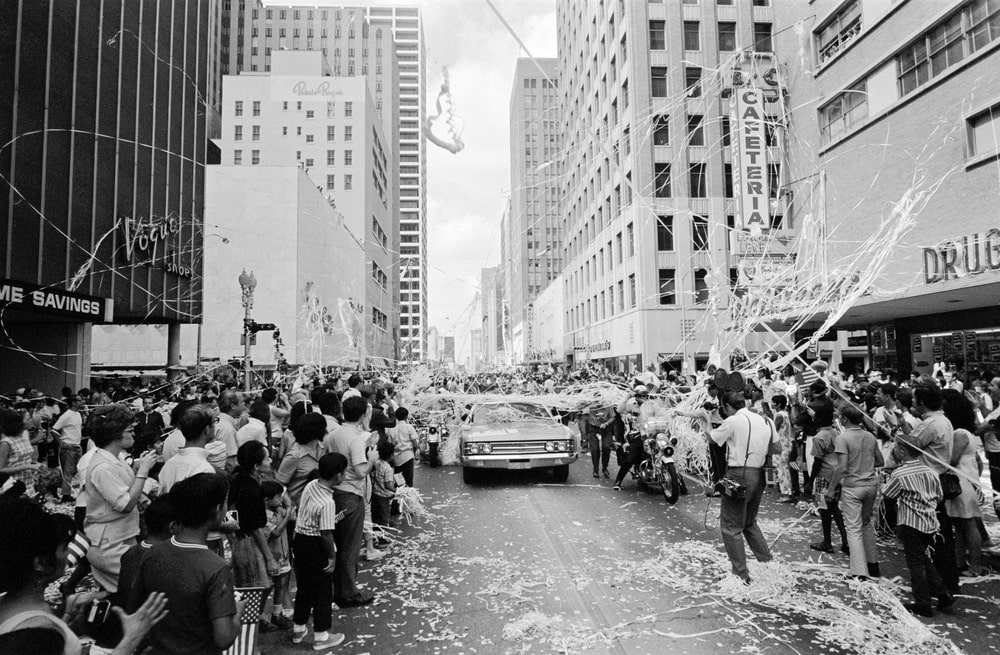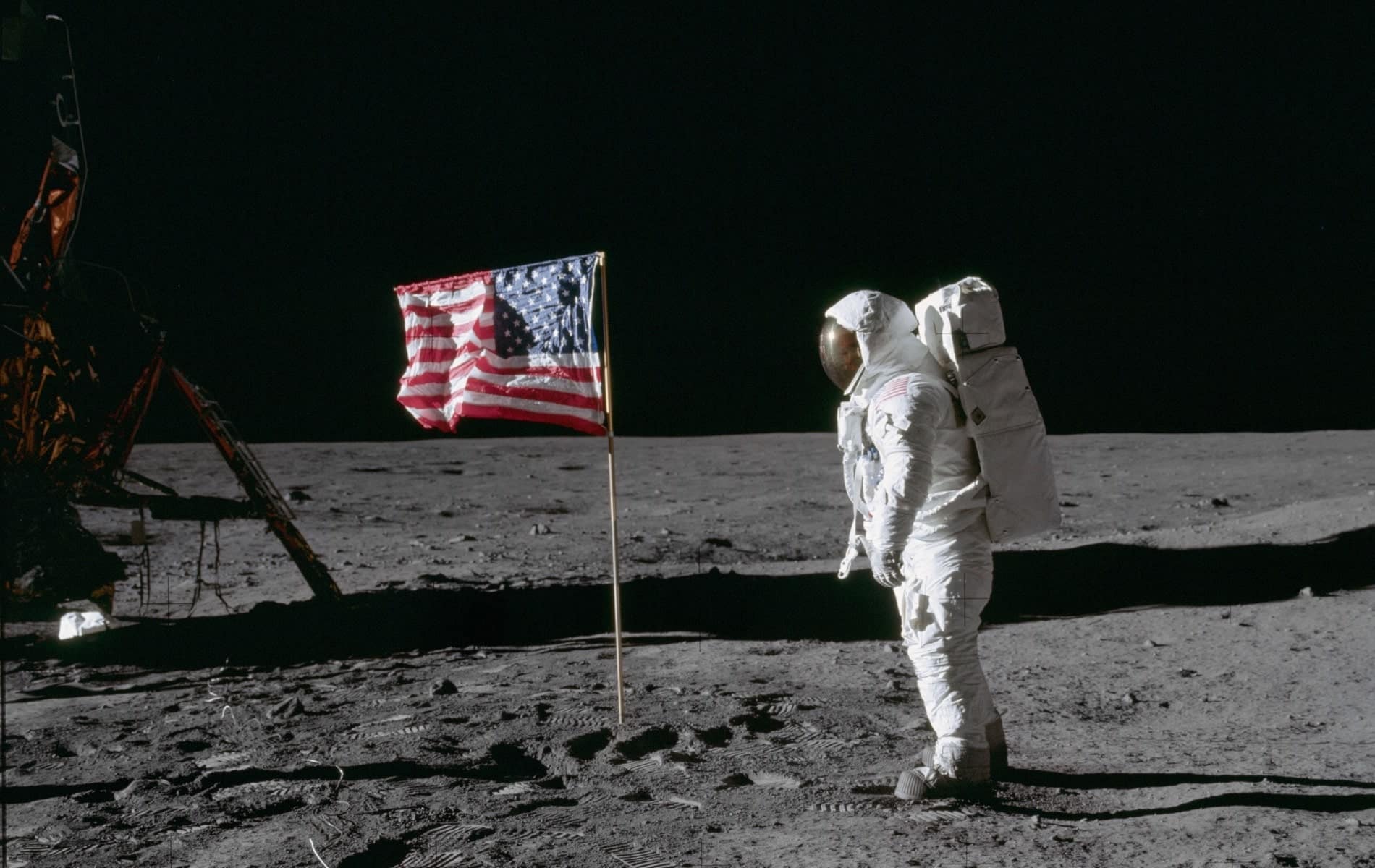
vie-magazine-apollo-11-50th-anniversary-hero-min
Astronaut Edwin E. Aldrin Jr., lunar module pilot of the first lunar landing mission, poses for a photograph beside the deployed United States flag during Apollo 11 extravehicular activity (EVA) on the lunar surface. The Lunar Module (LM) is on the left, and the footprints of the astronauts are clearly visible in the soil of the moon. Astronaut Neil A. Armstrong, commander, took this picture with a 70mm Hasselblad lunar surface camera. While astronauts Armstrong and Aldrin descended in the LM the "Eagle" to explore the Sea of Tranquility region of the moon, astronaut Michael Collins, command module pilot, remained with the Command and Service Modules (CSM) "Columbia" in lunar orbit. | Photo courtesy of NASA
USA Celebrates the 50th Anniversary of Apollo 11 Moon Landing
By Olivia Manthey
July 16 marks the fiftieth anniversary of the Apollo 11 launch and then its famous landing on the surface of the moon on July 20. It is such a great time of year—just celebrating the Fourth of July, a World Cup title for the US Women’s Soccer Team, and now looking back on one of the country’s biggest accomplishments! On these dates in 1969, a team of NASA scientists and astronauts solidified the country’s “space race” position as they successfully documented the lunar landing. Astronauts Buzz Aldrin and Neil Armstrong went down in history, and now the country is commemorating the efforts of all involved.
The original NASA Johnson Space Center mission control room has been restored to its former glory for the occasion. The control room takes us on a blast from the past as it emulates its 1969 design and layout—but all this restoration didn’t come easily, and it took several years and $5 million to complete. Visitors can check it out now!
- The Apollo 11 mission launched from the Kennedy Space Center (KSC) in Florida via the Marshall Space Flight Center (MSFC) developed Saturn V launch vehicle on July 16, 1969 and safely returned to Earth on July 24, 1969. Aboard the space craft were astronauts Neil A. Armstrong, commander; Michael Collins, Command Module (CM) pilot; and Edwin E. (Buzz) Aldrin Jr., Lunar Module (LM) pilot. With the success of Apollo 11, the national objective to land men on the Moon and return them safely to Earth had been accomplished. After 2½ hours of surface exploration, astronauts Neil Armstrong and Edwin Aldrin returned to the LM “Eagle” for rest, eating, and checkout of the vehicle in preparation for liftoff. The LM was a two part spacecraft. Its lower or descent stage had the landing gear, engines, and fuel needed for the landing. When the LM blasted off the Moon, the descent stage served as the launching pad for its companion ascent stage, which was also home for the two astronauts on the surface of the Moon. The LM was full of gear with which to communicate, navigate, and rendezvous. It also had its own propulsion system, and an engine to lift it off the Moon and send it on a course toward the orbiting CM. In this photograph, the ascent stage is seen back dropped by Earth just prior to its rendezvous with the CM. | Photo courtesy of NASA
- Apollo 11 astronauts, (left to right) Edwin E. Aldrin Jr., Lunar Module pilot; Michael Collins, Command Module pilot; and Neil A. Armstrong, commander, are showing a two-pound Moon rock to Frank Taylor, director of the Smithsonian Institute in Washington D.C. The rock was picked up from the Moon’s surface during the Extra Vehicular Activity (EVA) of Aldrin and Armstrong following man’s first Moon landing and was was presented to the Institute for display in the Art and Industries Building. The Apollo 11 mission, launched from the Kennedy Space Center, Florida via the Marshall Space Flight Center (MSFC) developed Saturn V launch vehicle on July 16, 1969 and safely returned to Earth on July 24, 1969. With the success of Apollo 11, the national objective to land men on the Moon and return them safely to Earth had been accomplished. | Photo courtesy of NASA
Below are just a few other ways the US is celebrating this astonishing breakthrough in space exploration:
Apollo 11 The Immersive Live Show
What better way to celebrate than by reenacting the landing and putting audiences right in the action? A live immersive show of the 1969 lunar landing is running through this fall in Los Angeles, Costa Mesa, California, and Houston, Texas. 40,000 square feet of projection gives a lifelike model of how it all happened fifty years ago.
Tickets are available on apollo11show.com—be sure to get yourself an experience with a piece of American history!
- Astronaut Neil A. Armstrong, wearing an Extravehicular Mobility Unit, participates in a simulation of deploying and using lunar tools on the surface of the moon during a training exercise in Building 9 on April 22, 1969. Armstrong is the commander of the Apollo 11 lunar landing mission. In the background is a Lunar Module mock-up. | Photo courtesy of NASA
- Apollo 7 lifts off from Cape Kennedy Launch Complex 34 at 11:03 A.M., EDT. The astronauts aboard, for the first manned lunar orbital mission, are Astronauts Walter M. Schirra,Jr. Commander; Donn F. Eisele, Command Module Pilot; and Walter Cunningham, Lunar Module Pilot. | Photo courtesy of NASA
- The prime crew of the Apollo 11 lunar landing mission relaxes on the deck of the NASA Motor Vessel Retriever prior to participating in water egress training in the Gulf of Mexico. Left to right, are astronauts Edwin E. Aldrin Jr., lunar module pilot; Neil A. Armstrong, commander; and Michael Collins, command module pilot. In the background is Apollo Boilerplate 1102 which was used in the training exercise. | Photo courtesy of NASA
- Personnel within the Launch Control Center watch the Apollo 11 liftoff from Launch Complex 39A today at the start of the historic lunar landing mission. The LCC is located three-and-one-half miles from the launch pad. | Photo courtesy of NASA
- Overall view of the Mission Operations Control Room (MOCR) in the Mission Control Center (MCC), Building 30, Manned Spacecraft Center (MSC), showing the flight controllers celebrating the successful conclusion of the Apollo 11 lunar landing mission. | Photo courtesy of NASA
Apollopalooza
Apollopalooza is a weeklong event celebrating the momentous anniversary—if you love the Rocky Mountains and the Apollo 11, then this is the place for you! Enjoy various activities, speakers, displays, and more! Apollopalooza runs July 13–20 at the Wings Museum in Denver, Colorado.
Get your tickets and more information at wingsmuseum.org.
Apollo 50th Gala
We all love a good excuse to dress up, right? Celebrate this anniversary the best and most extravagant way possible at the Apollo Saturn V Center in the Kennedy Space Center Visitor Complex on July 16. Celebrity guests, members of the Apollo crews, and other VIPs will be in attendance for this black-tie affair.
Tickets are available at apollo50thgala.com
- This is the official crew portrait of the Apollo 11 astronauts. Pictured from left to right are: Neil A. Armstrong, Commander; Michael Collins, Module Pilot; Edwin E. “Buzz” Aldrin, Lunar Module Pilot. Apollo 11 was the first marned lunar landing mission that placed the first humans on the surface of the moon and returned them back to Earth. Astronaut Armstrong became the first man on the lunar surface, and astronaut Aldrin became the second. Astronaut Collins piloted the Command Module in a parking orbit around the Moon. Launched aboard the Saturn V launch vehicle (SA-506), the three astronauts began their journey to the moon with liftoff from launch complex 39A at the Kennedy Space Center at 8:32 am CDT, July 16, 1969. | Photo courtesy of NASA
- The Apollo 11 astronauts, left to right, Neil A. Armstrong, Michael Collins and Edwin E. Aldrin Jr. share jokes with well-wishers on the other side of the window of their Mobile Quarantine Facility aboard the USS Hornet. The astronauts splashed down at 12:50 p.m. EDT at the completion of their historical eight-day first manned lunar landing. | Photo courtesy of NASA
- Apollo 11 parade downtown Houston, TX, 08/16/1969. Astronauts Edwin Aldrin, Michael Collins and Neil Armstrong are in the cars with general public welcoming them home. | Photo courtesy of NASA
Apollo’s Muse: The Moon in the Age of Photography
The Metropolitan Museum of Art is already a must when visiting New York City, so why not go to see the Apollo’s Muse this year? Everything from drawings to the camera that was used on the Apollo 11 will be on display! This exhibit is happening now through September 22.
Get your tickets and more information here at metmuseum.org
Space & Rocket Center’s Celebration Car Show
The NASA Space & Rocket Center in Huntsville, Alabama, will be hosting a vintage car show with vehicles from the Apollo era this weekend, July 13. Not only will there be some incredible cars—but they will also have a full-scale, operable Apollo Lunar Rover replica on display! Be sure to check out all the other amazing exhibits and events at the center while you’re in town!
Visit rocketcenter.com to get more information.
Share This Story!
CATEGORIES
RECENT POSTS
NEWSLETTER
Sign up to receive exclusive content updates
KEEP UP WITH THE LATEST STORIES FROM VIE



